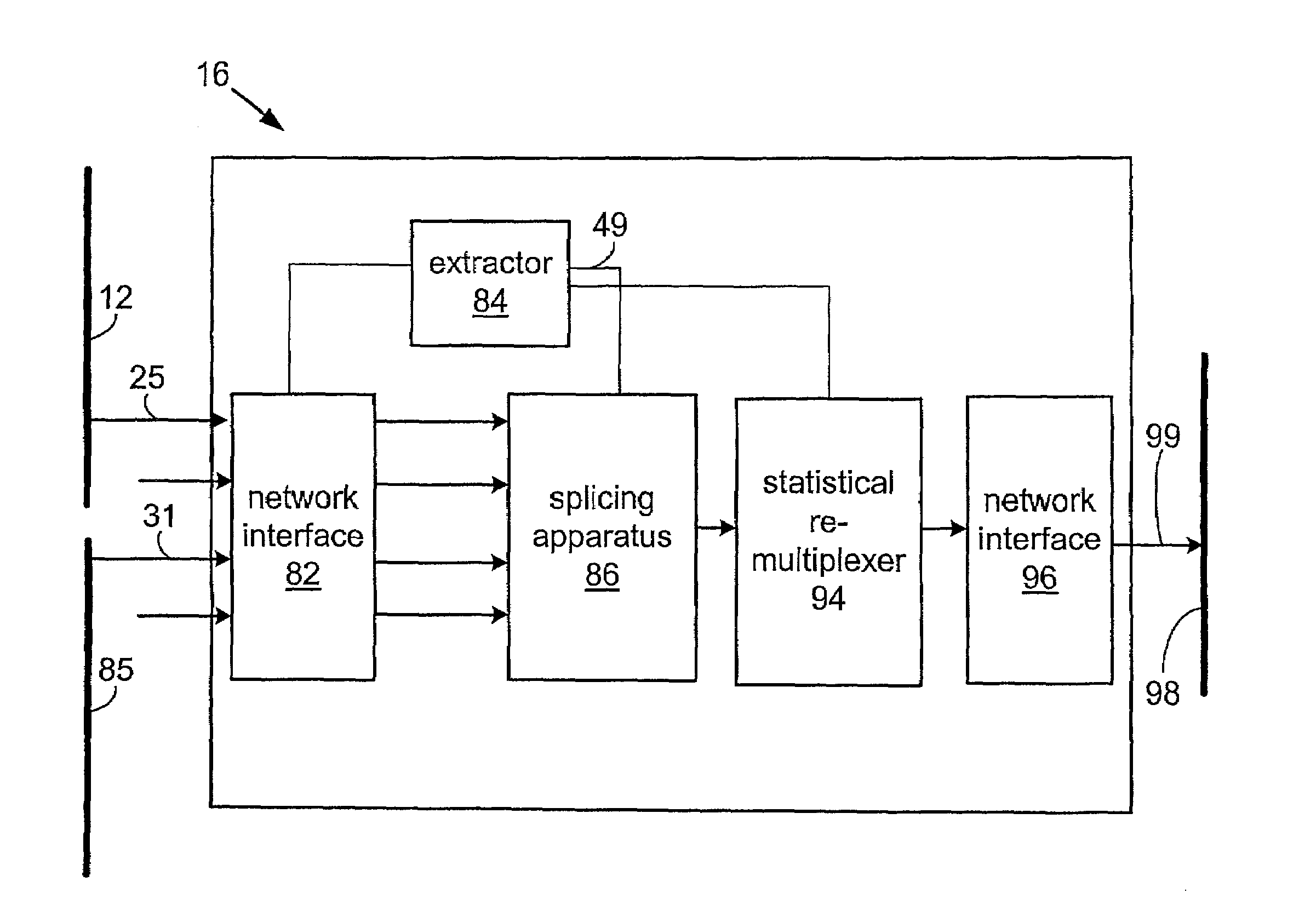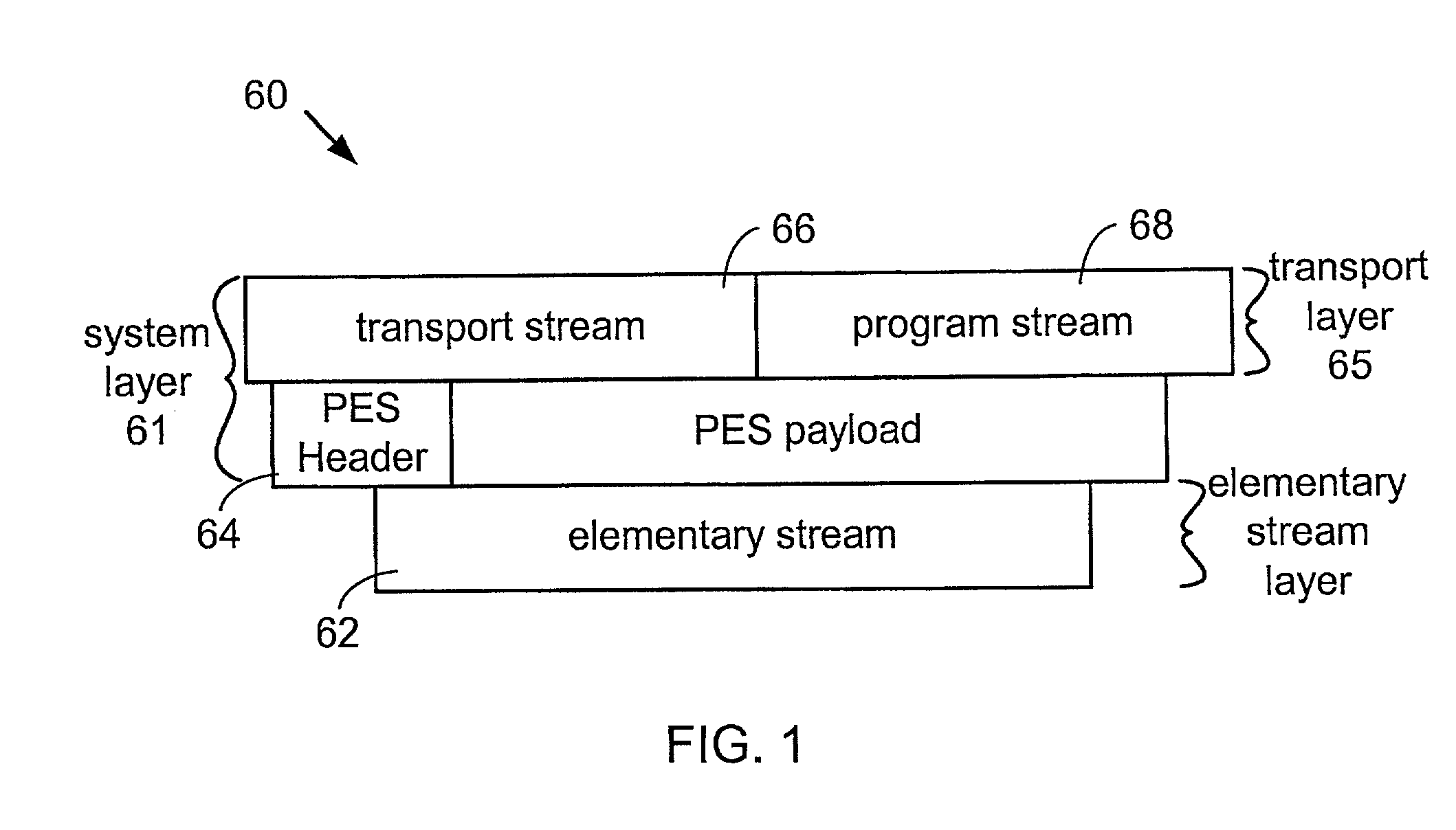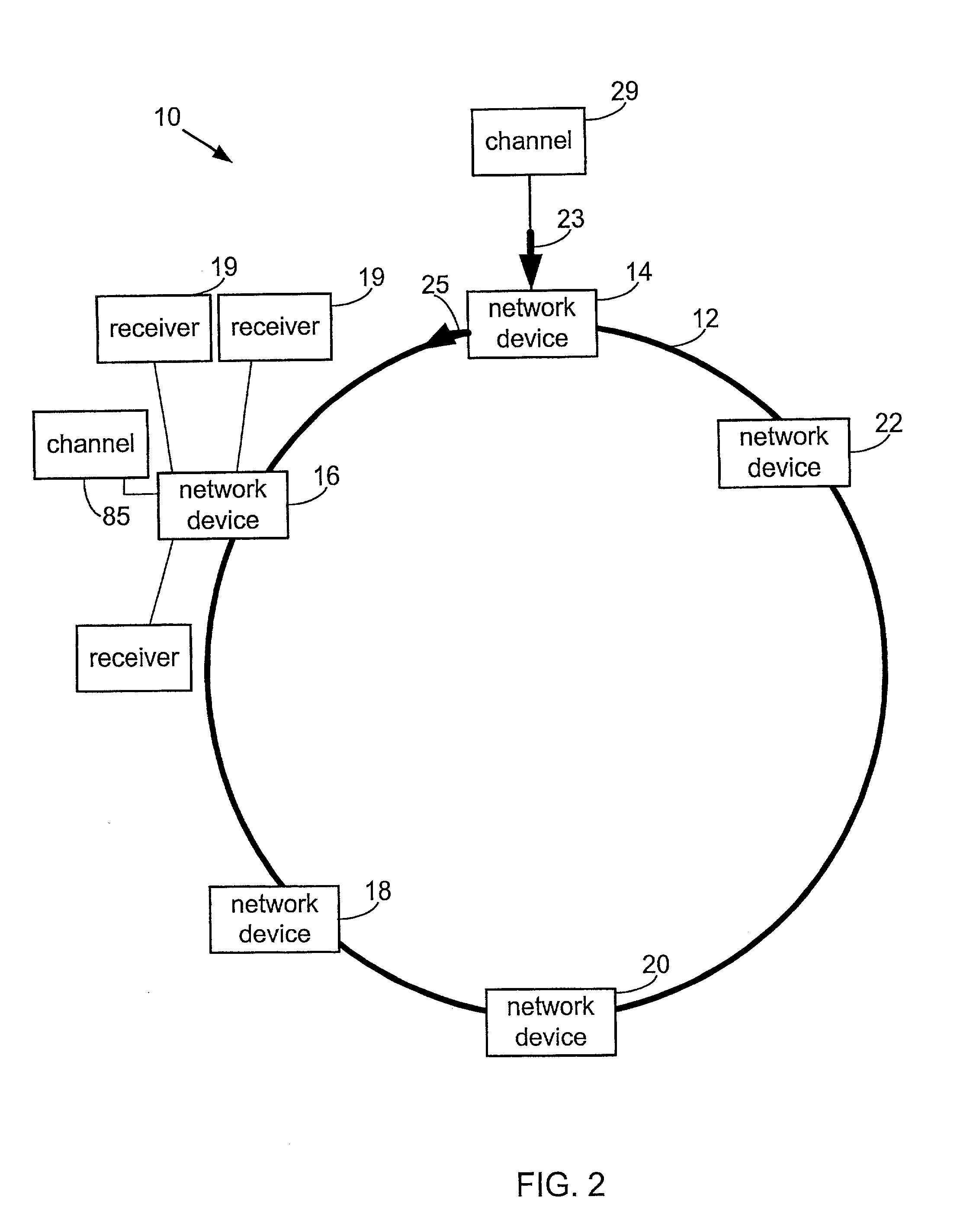Methods and apparatus for facilitating network splicing
a network splicing and network technology, applied in the field of systems and methods for transmitting compressed digital video data, can solve the problems of reducing the output video quality, reducing the bandwidth efficiency of bandwidth, and reducing the cost of bandwidth efficiency, so as to improve bandwidth efficiency, improve bandwidth efficiency, and simplify packet level switching
- Summary
- Abstract
- Description
- Claims
- Application Information
AI Technical Summary
Benefits of technology
Problems solved by technology
Method used
Image
Examples
Embodiment Construction
[0033]The present invention will now be described in detail with reference to a few preferred embodiments thereof as illustrated in the accompanying drawings. In the following description, numerous specific details are set forth in order to provide a thorough understanding of the present invention. It will be apparent, however, to one skilled in the art, that the present invention may be practiced without some or all of these specific details. In some instances, well known process steps and / or structures have not been described in detail in order to not unnecessarily obscure the present invention.
[0034]The present invention provides systems and methods for providing compressed video data from multiple bit streams. The systems and methods described herein apply a two-stage strategy. In the first stage, a conditioning step is performed on a bit stream comprising compressed video data which outputs a conditioned bit stream that is able to receive digital insertions without subsequent d...
PUM
 Login to View More
Login to View More Abstract
Description
Claims
Application Information
 Login to View More
Login to View More - R&D
- Intellectual Property
- Life Sciences
- Materials
- Tech Scout
- Unparalleled Data Quality
- Higher Quality Content
- 60% Fewer Hallucinations
Browse by: Latest US Patents, China's latest patents, Technical Efficacy Thesaurus, Application Domain, Technology Topic, Popular Technical Reports.
© 2025 PatSnap. All rights reserved.Legal|Privacy policy|Modern Slavery Act Transparency Statement|Sitemap|About US| Contact US: help@patsnap.com



